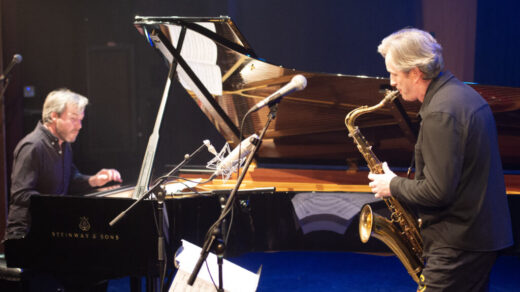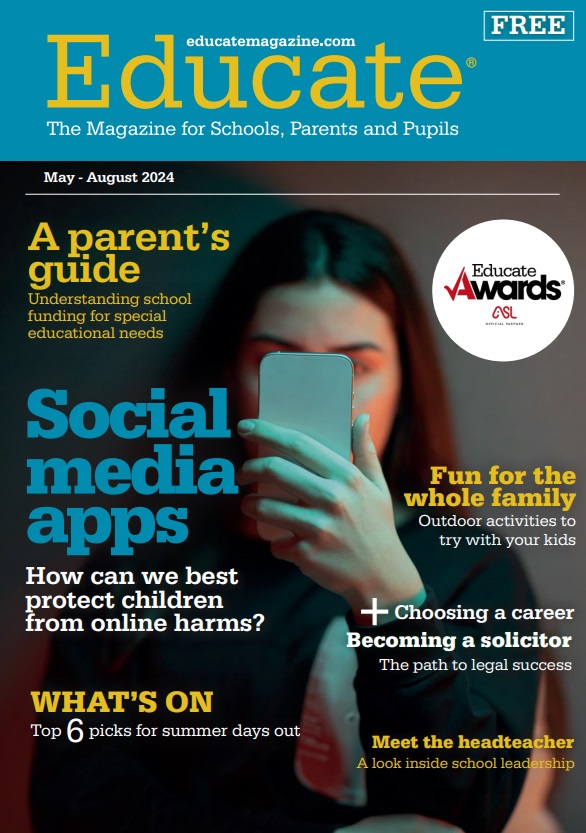LJMU’s Graeme Close talks about nutrition at home when exercising

As at home learning continues for some pupils and students around the country, Educate speaks to Graeme Close, Professor of Human Physiology Sport and Exercise Sciences at Liverpool John Moores University, to find out the best way of ensuring children and parents are getting the right nutrients whilst they are learning/working from home and taking part in at-home workouts.
Last month on Twitter, Professor Close offered his expert advice to schools and colleges around the UK to help educate students further with their sports studies, via exclusive webinars. He was inundated with requests which indicates a keen interest in young people and teachers.
Graeme also recently appeared in the BBC’s documentary about working out at home called ‘The Truth About… Getting Fit at Home’. The show can be watched on BBC iPlayer here.
At the beginning of the interview, Graeme reiterates the importance of greens. As we know, vegetables are jampacked with health benefits but can the trickiest food type to incorporate into a child’s diet. Graeme said “It is so hard to get children to eat vegetables so it’s all about becoming creative and how we can make vegetables look more appealing.
“The days of just throwing some peas and broccoli in a pan and boiling it to with an inch of its life, just doesn’t cut it, so it’s no wonder that no one wants to eat it. We need to get a little bit creative and get the kids involved in it. For example, me and my family will have omelettes in the morning and I’ll chop up a load of vegetables and let my kids put into the omelette what they want, so it’s getting them involved in the cooking, which we have found made a big difference into trying to get more [vegetables] into them.”

Graeme added: “Look I’m not saying that I’ve got all the answers because I still have daily battles with my own children to eat some vegetables!”
The structure of a typical school day may be lost but Graeme explains that awareness is needed to ensure what we are eating matches our output.
He said: “An awareness of how our day may change will also help. You may have gone from a really high energy job to now sitting down a lot more, and with the current restrictions, through no fault of anyone’s own, we may have dropped our energy expenditure and if we’re not careful we can find ourselves creeping up on them scales.
“That’s more so for parents but also, we need to consider our children but there is a chance that their energy may have dropped and we may just need to be a little bit more careful on some of those sweet treats. On a normal day, they’d be running around a playground and burning those sweet treats off but when they’re sat at home and not able to do anything there needs to be more awareness.”
For teenagers it is different. As more independence is given to them as they get older, their intake will differ, especially in secondary school or outside of school when they can go to the local shops and buy whatever they fancy.
Graeme said: “I don’t think teenagers seem to know enough about food, I don’t want to blame schools as they already have enough to teach! But I think it is important that we try and get our teens to understand a little bit more about food and food science.
“I was mortified myself recently as I was looking in my boy’s school bag and some of those really high caffeinated high energy drinks were in there. I did a piece with the BBC recently which showed how much sugar are in those drinks in teaspoons they even shocked my boy at how much how much sugar was in those drinks. It’s all about helping them getting awareness and helping them understand why we are eating like this and maybe try and use examples from the sporting world.

He continued: “If you go into an England rugby environment the amount of vegetable produce is huge. You will see very little confectionery. So, letting them know that this is what athletes do is part of the reason why I have volunteered to give these school talks because I think if people can see a 120K big bearded rugby man eaten a plateful of vegetables, it might help to breakdown these connotations that this isn’t soft food, this is actually really important to athletes.
What would Graeme suggest if children are doing at home workouts, what types of food should they be eating?
He said: “I think the first thing to look at when working at from home, is getting some structure back into your day. So, try and have planned meal times and not dip into the kitchen in between lesson times and before you know it, you’re eating something that you shouldn’t do.
“Make sure that you have some breakfast in the morning, especially if you’re going to do the Joe Wicks type workouts as you need to be fuelled properly. It can be something as simple as some fruit and yoghurt or a good quality muesli with some fruit as well. Or if they fancy something warm, maybe some eggs – I’m a big fan of eggs in the morning.”
He continued: “It’s just about having a good start to the day for both mind and body for the children. I think there is a big temptation at the moment with home schooling to roll out of bed, put a comb through your hair and sit in front of the laptop when actually getting up in time to do something, like a workout, can be really beneficial.
“It is also an opportunity in some ways to teach our children how to knock up a simple healthy breakfast for themselves. It could be something as simple as Greek yoghurt with muesli and some frozen berries and then you have a really nutritional breakfast for the kids.”
By encouraging children into the kitchen, it provides them with the opportunity to see where their food comes from and how it is made. Graeme suggests replicating some of their favourite foods to show why having it all the time is not good for them.
He said: “Every now and again, I don’t think it’s a bad idea if you were to make some of the food that they may have as a treat, for example, when you make some muffins let them see what the hidden food is that is going into those muffins and it might actually shock them to see how much butter and sugar goes in. Let them know that you’re making a healthier version of this and explain to them this is why we can’t be eating this kind of stuff all the time.”

For parents who are now working from home, and also working out from home, Graeme suggests incorporating more protein into your diet. “A lot of people in everyday life don’t get the protein intake right the way that we do with athletes. So, we need to make sure that we’re having a reasonable amount of protein regularly throughout the day.
“It is not just important for athletes but it’s all also important as we get older for the maintenance of lean muscle mass and all the other health benefits associated with it. If somebody has now just decided that they want to increase their lean muscle mass a little bit to get that bit stronger, it will help set themselves up for later life.
“I’m not saying to have huge amounts of protein but making sure we’re eating a reasonable amount with each meal. For example, try and not just have a piece of toast and a cup of coffee for breakfast. Perhaps look at having some eggs with that toast or try some fish. Ideally, we should try to have protein at least four times today – I think that would be an important change that a lot of people could look to incorporate into their diet.”
As a lot more parents and families are opting to lead a vegetarian or vegan lifestyle, incorporating high protein foods into meal times can be a struggle. Graeme said: “Things like nuts and nut butters are a good source of protein. Vegan friendly milk alternatives are a good source of protein, micro protein such as Quorn and also tofu, lentils, beans, pulses.
“Having a high protein diet is quite achievable when leading a vegan lifestyle. The challenge with a lot of vegan based food is that they have a high fibre content which is a good thing but can make you feel full quite quickly. It can be a challenge to get enough protein in your diet but certainly not impossible and there are certainly athletes who do very well on a vegan lifestyle.”
For those exercising from home, a common question is when should you eat, before or after working out? Graeme believes it doesn’t make a huge difference if you’re doing light exercise.
He said: “If you’re going to do anything with a degree of intensity, you will probably want to wait an hour for that food to begin to be digested so that it is not sitting really heavy in you. At the elite end, we’d leave it a lot longer but that’s very different. I’m not a huge fan particularly of children doing a fasted exercise, I would much prefer them to have some food before and then train. Then a healthy snack at the end of it so you are front and backloading it, but in terms of timing of it try and give it about an hour.”
If you’re interested in sports nutrition and sports science, take a look at LJMU’s broad range of courses: https://www.ljmu.ac.uk/about-us/faculties/faculty-of-science/school-of-sport-and-exercise-sciences
You can follow Graeme Close on Twitter here: https://twitter.com/close_nutrition.




